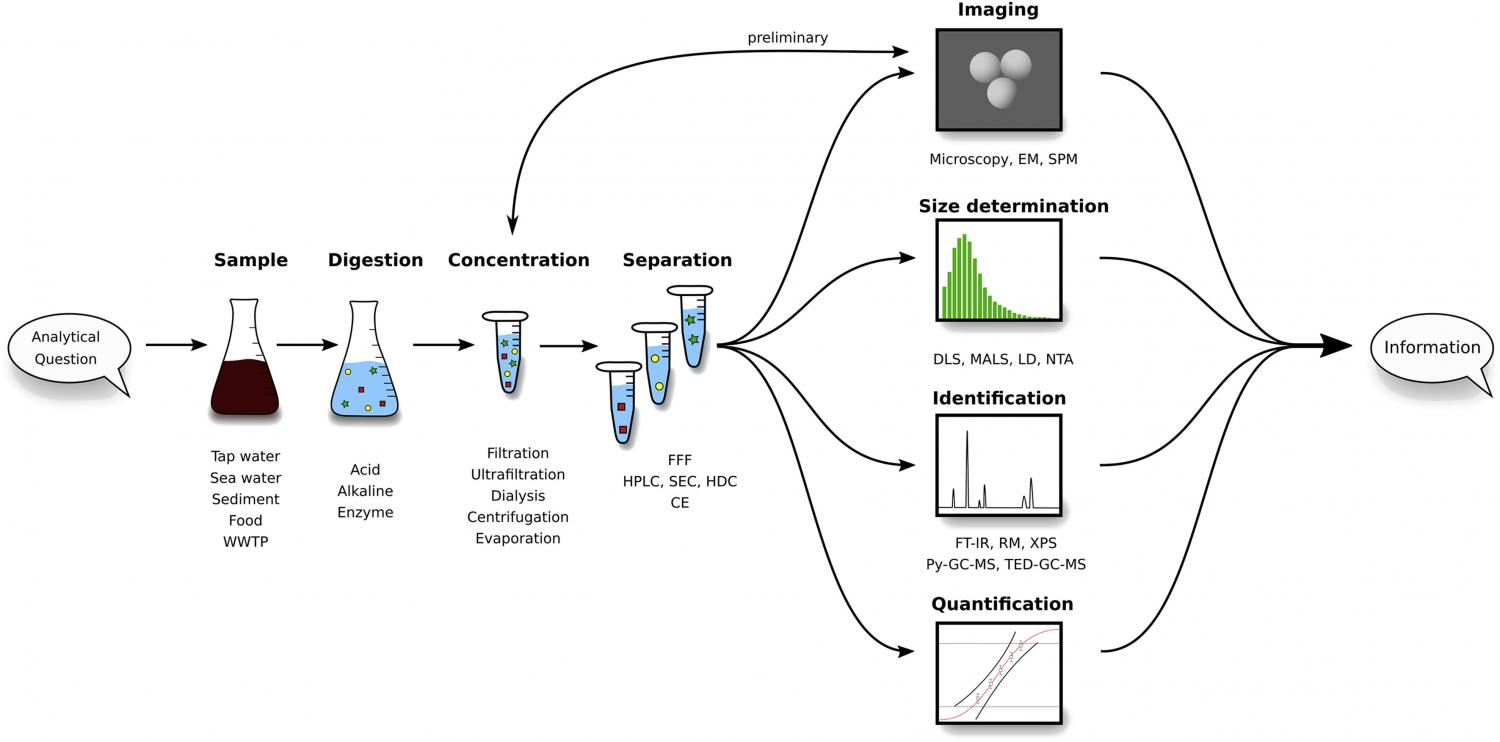
Elsevier, TrAC - Trends in Analytical Chemistry, Volume 112, March 2019
Nanoplastic is an emerging topic of relevance in environmental science. The analytical methods for microplastic have a particle size limit of a few micrometers so that new methods have to be developed to cover the nanometer range. This contribution reviews the progress in environmental nanoplastic analysis and critically evaluates which techniques from nanomaterial analysis may potentially be adapted to close the methodological gap. A roadmap is brought forward for the whole analytical process from sample treatment to particle characterization. This includes a critical review of (i) methods for analyte extraction and preconcentration from various environmental matrices; (ii) methods for the separation of the nanoplastic into specific size fractions; (iii) light scattering techniques and various types of microscopy to characterize the particle fractions; (iv) chemical identification of particles to validate the obtained data. For these methods, we will discuss prospects and limitations to develop analytical protocols for specific sampling scenarios.
